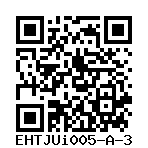ZB11ALD-L4
EHTJUi005-A-3
General
Cell Line |
|
| hPSCreg name | EHTJUi005-A-3 |
| Cite as: | EHTJUi005-A-3 (RRID:CVCL_B0JN) |
| Alternative name(s) |
ZB11ALD-L4
|
| Cell line type | Human induced pluripotent stem cell (hiPSC) |
| Similar lines |
EHTJUi005-A (DFGMP-ZB11AL-D) EHTJUi005-A-1 (ZB11ALD-S16-5) PUMCHi001-A-1 (IPS34-R-17) Donor's gene variants: LMNA Donor diseases: familial partial lipodystrophy type 2 WTSIi227-A-1 (WETU LRP2 KO) |
| Last update | 6th September 2021 |
| User feedback | |
Provider |
|
| Generator | East Hospital Affiliated to Tongji University (EHTJU) |
| Owner | East Hospital Affiliated to Tongji University (EHTJU) |
| Distributors | |
| Derivation country | China |
External Databases |
|
| BioSamples | SAMEA8904409 |
| Cellosaurus | CVCL_B0JN |
| Wikidata | Q108820187 |
General Information |
|
| Publications | |
| * Is the cell line readily obtainable for third parties? |
Yes Research use: allowed
Clinical use: not allowed
Commercial use: allowed
|
| Subclone of | |
Donor Information
General Donor Information |
|
| Sex | female |
| Ethnicity | Han |
Phenotype and Disease related information (Donor) |
|
| Diseases | No disease was diagnosed.
|
| Disease associated phenotypes | no phenotypes |
Karyotyping (Donor) |
|
| Has the donor karyotype been analysed? |
No
|
Other Genotyping (Donor) |
|
| Is there genome-wide genotyping or functional data available? |
Yes
Exome sequencing
Health |
External Databases (Donor) |
|
| BioSamples | SAMEA8883269 |
Ethics
Also have a look at the ethics information for the parental line
EHTJUi005-A
.
| For generation of the cell line, who was the supplier of any recombined DNA vectors or commercial kits used? |
hIPSC Derivation
General |
|
|
The source cell information can be found in the parental cell line
EHTJUi005-A.
|
|
Reprogramming method |
|
| Vector type | Non-integrating |
| Vector | Sendai virus |
| Genes | |
| Is reprogramming vector detectable? |
No |
| Methods used |
RT-PCR
|
Vector free reprogramming |
|
Other |
|
| Derived under xeno-free conditions |
Yes |
| Derived under GMP? |
Yes |
| Available as clinical grade? |
No |
Culture Conditions
| Surface coating | Laminin |
| Feeder cells |
No |
| Passage method |
Enzyme-free cell dissociation
Gentle Cell Dissociation Reagent
|
| CO2 Concentration | 5 % |
| Medium |
Other medium:
Base medium: STEMFIT
Main protein source: Serum concentration: % |
| Has Rock inhibitor (Y27632) been used at passage previously with this cell line? | No |
| Has Rock inhibitor (Y27632) been used at cryo previously with this cell line? | No |
| Has Rock inhibitor (Y27632) been used at thaw previously with this cell line? | Yes |
Characterisation
Analysis of Undifferentiated Cells
Score:
| Marker | Present | Absent |
| mCpG | ||
| OCT4 |
Self-renewal
Positive
Endoderm
Unknown
Mesoderm
Unknown
Ectoderm score
Unknown
alkaline phosphatase staining
Differentiation Potency
In vitro directed differentiation
Microbiology / Virus Screening |
|
| HIV 1 | Negative |
| HIV 2 | Negative |
| Hepatitis B | Negative |
| Hepatitis C | Negative |
| Mycoplasma | Negative |
Genotyping
Karyotyping (Cell Line) |
|
| Has the cell line karyotype been analysed? |
Yes
46,XX
Passage number: 26
Karyotyping method:
G-Banding
|
Other Genotyping (Cell Line) |
|
| Is there genome-wide genotyping or functional data available? |
Yes
Exome sequencing
|
Genetic Modification
| Disease/phenotype related modifications |
|


Login to share your feedback, experiences or results with the research community.